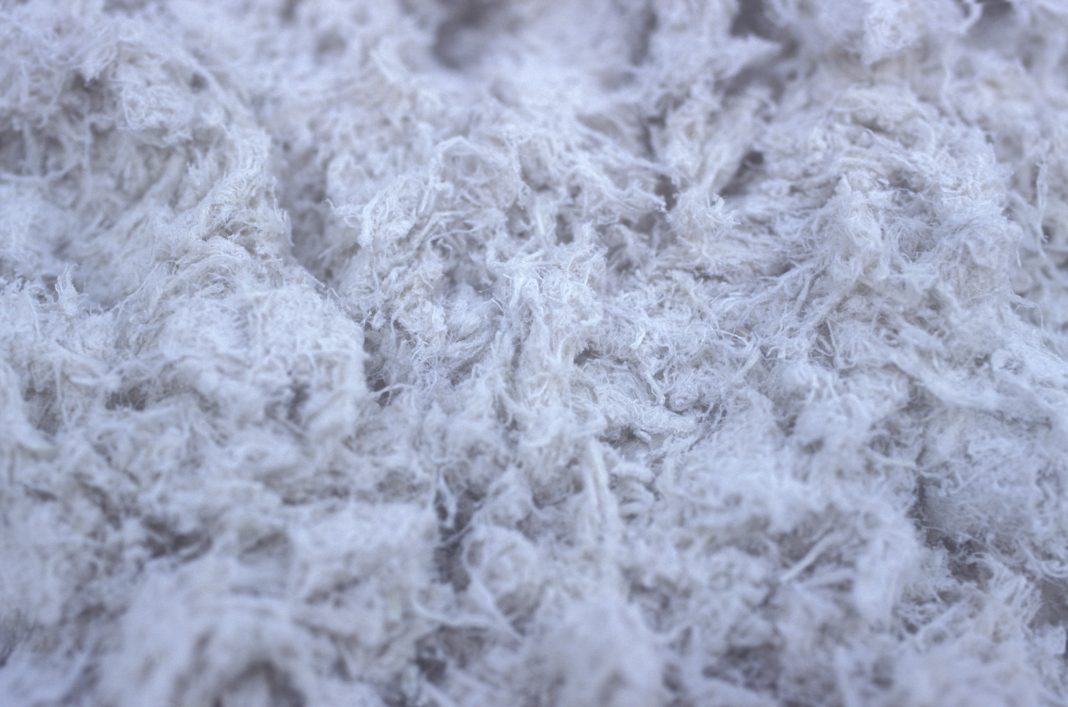Ujjwal Adhikari, Kinta Serve, and Jean Pfau explain how asbestos exposure negatively affects the body’s immune response and repair mechanisms, particularly through macrophage dysfunction. They emphasize that gaining a better understanding of cellular responses to inhaled particles could help researchers discover new therapeutic strategies for addressing environmentally induced conditions
Once widely used in commercial applications, asbestos is now recognized as a significant public health concern, causing asbestosis, pleural fibrosis, lung cancer, and malignant mesotheliomas. (1,2) As detailed in other OAG articles, (3) exposure to amphibole, or straight-chained, asbestos fibers, is also linked to autoimmune responses. While not all the mechanisms underlying these responses are clearly understood, studies suggest that unresolved inflammation may contribute to autoimmunity following exposure to inhaled particulates, such as amphibole asbestos and silica. (1)
Under normal conditions, when foreign particles or microorganisms enter the lungs, resident alveolar macrophages, specialized immune cells in the alveolar space of the lungs, act as the first line of defense against these invaders. Once alveolar macrophages engulf and digest particles, they may undergo activation and differentiation into ‘pro-inflammatory’, or M1 cells, and send out signals (called cytokines and chemokines) that stimulate the influx of additional macrophages and neutrophils to the lungs. (2) After the foreign particles are adequately removed or contained, recruited macrophages will differentiate into ‘pro-resolving’, or M2 cells. M2 cells express special receptors that allow them to ingest, or phagocytose, debris from host cells that were damaged or killed while dealing with the foreign threats. This specialized form of phagocytosis is known as efferocytosis and is crucial for maintaining the health of host tissues. However, if efferocytosis is interrupted, chronic inflammation and immune dysfunction can result, as dying cells tend to release pro-inflammatory signals, including Damage-Associated Molecular Patterns (DAMPs) and tissue-damaging free radicals, if not cleared quickly. (4)
Asbestos, apoptosis, and autoimmunity
Studies have shown that unresolved inflammation and dysregulation of immune responses contribute to the development of fiber-induced autoimmunity. (1) Inhalation of bio- persistent particles, such as silica or asbestos, is especially problematic for immune cells like macrophages because they cannot be effectively digested and removed. This leads to a situation known as frustrated phagocytosis, which results in oxidative cytotoxicity by generating reactive oxygen species, ultimately causing DNA damage and cell death. (5,6) The cell death in this environment results in the release of inflammatory signals, which maintain recruited macrophages in an M1 state, thus decreasing overall efferocytosis: the clearance of dying cells. This hyperactivation and trafficking of immune responses worsen the tissue injury and ultimately lead to chronic inflammation. (4)
Several studies have demonstrated that macrophage exposure to inhaled toxicants alters the ability of cells to shift from the M1 to M2 state and impairs efferocytotic activity. This phenomenon is best documented in cells exposed to crystalline silica (7) but has also been shown following exposure to amosite (a type of straight-chained needle-like asbestos). (8) Recent studies from Dr Serve’s lab at Idaho State University also show that exposure to Libby amphibole asbestos fibers reduced efferocytosis in mouse macrophages (Figure 1). (9)
It has been hypothesized that ineffective efferocytosis may result in increased release of intracellular components (proteins, DNA) that are not typically available to immune cells. There are several types of cell death, but both silica and asbestos are known to cause a form of cell death called apoptosis, during which the cells break apart into blebs that are easy for phagocytic cells to engulf. Unfortunately, if occurring in a highly inflamed environment, some proteins become altered through processes like citrullination and oxidation, such that they are now perceived as foreign by the immune system. We have previously shown that the process of silica- or asbestos-induced apoptosis leads to the production of autoantibodies that recognize and bind to apoptotic blebs. (10.11) This increases the chance that the self-cell debris will not be quietly discarded, but instead it will generate an autoimmune response. When the host’s immune system becomes skewed so that it detects its own cells as foreign, a person may develop autoimmune disease. This connection between altered efferocytosis and autoimmunity has been suggested by researchers who have measured decreased efferocytotic activity in macrophages isolated from patients with systemic sclerosis (SSc). (7)
Therapeutic interventions
While much remains to be learned about exactly how macrophage dysfunction results in altered immune activity, it appears clear that efferocytosis plays a vital role in maintaining tissue homeostasis, and that inhaled particles can disrupt this crucial macrophage function. A better understanding of these cellular responses to inhaled particles may help researchers identify novel therapeutic strategies for mitigating environmentally induced lung diseases and autoimmune responses.
Funded by: CDC/ATSDR 1 NU61TS000355-01-00
References
- Pollard, K.M. https://doi.org/10.3389/fimmu.2020.587136
- Cheng, P. https://doi.org/10.3390/cells10020436
- Morrissette, K.L. https://doi.org/10.56367/OAG-042-11274
- Marzec, J.M. https://doi.org/10.1016/j.taap.2022.116070
- Dostert, C. https://doi.org/10.1126/science.1156995
- Pietrofesa, R.A. https://doi.org/10.3390/ijms17030322
- Lescoat, A. https://doi.org/10.3389/fimmu.2020.00219
- Lescoat, A. https://doi.org/10.1007/s00109-023-02401-9
- Adhikari, U. Asbestos Exposure Alters the Inflammation Response in an Acute Exposure Model. Biological Sciences, 2023, Idaho State University: ProQuest Dissertations and Theses Database.
- Pfau, JC. https://doi.org/10.1016/j.tox.2003.09.011
- Blake, D.J. https://doi.org/10.1016/j.tox.2008.01.008


